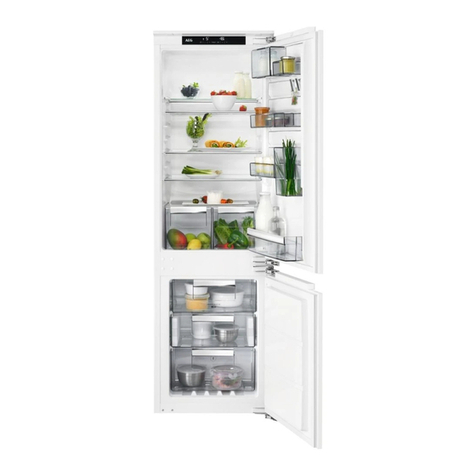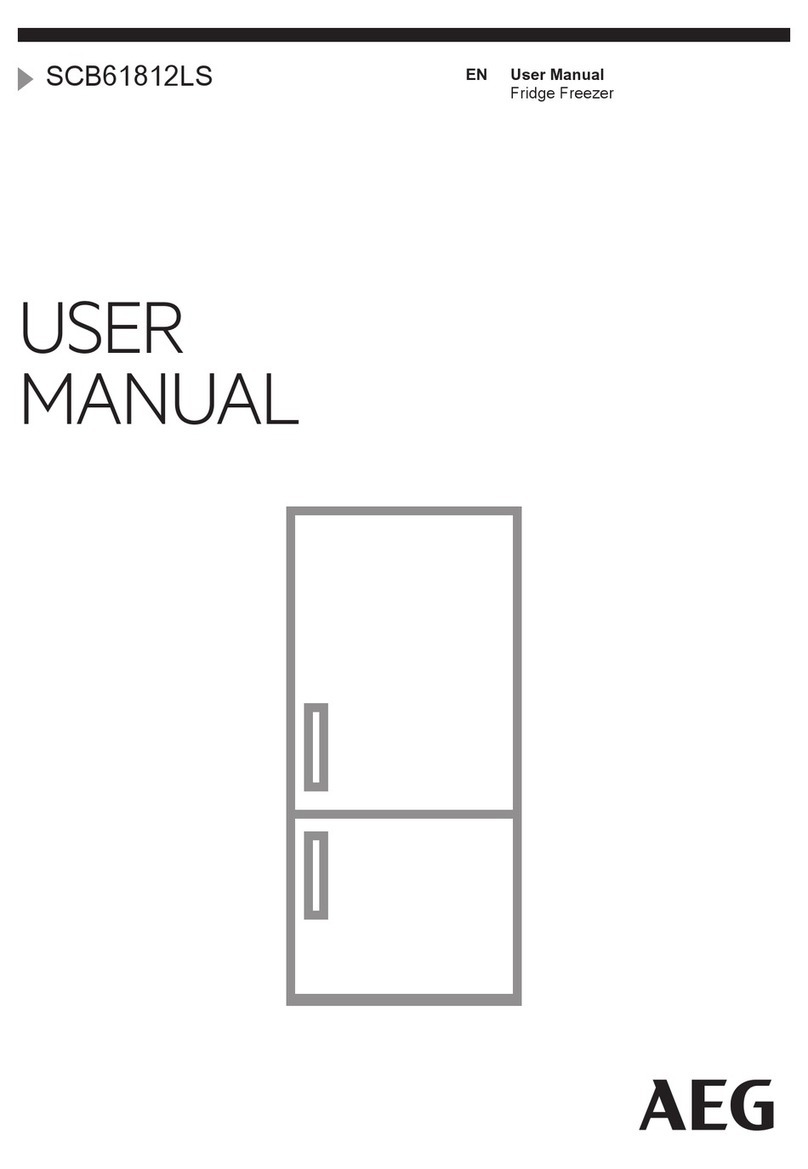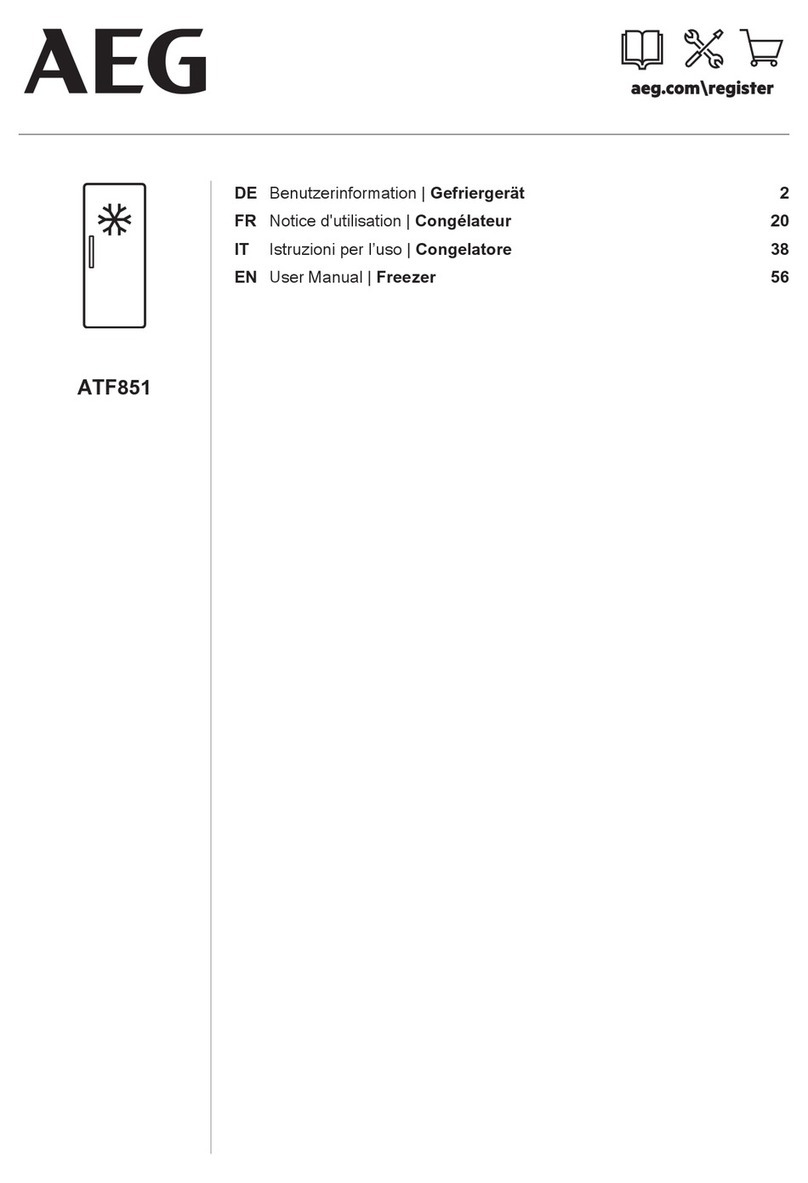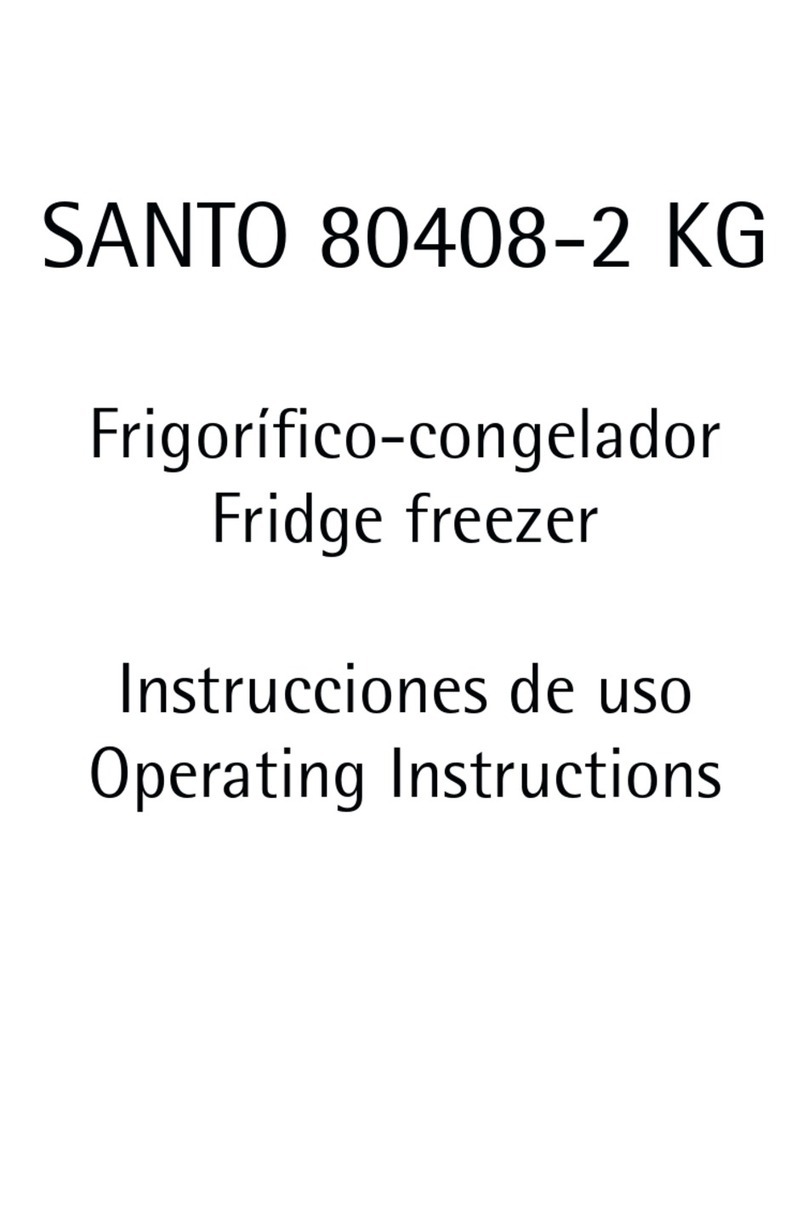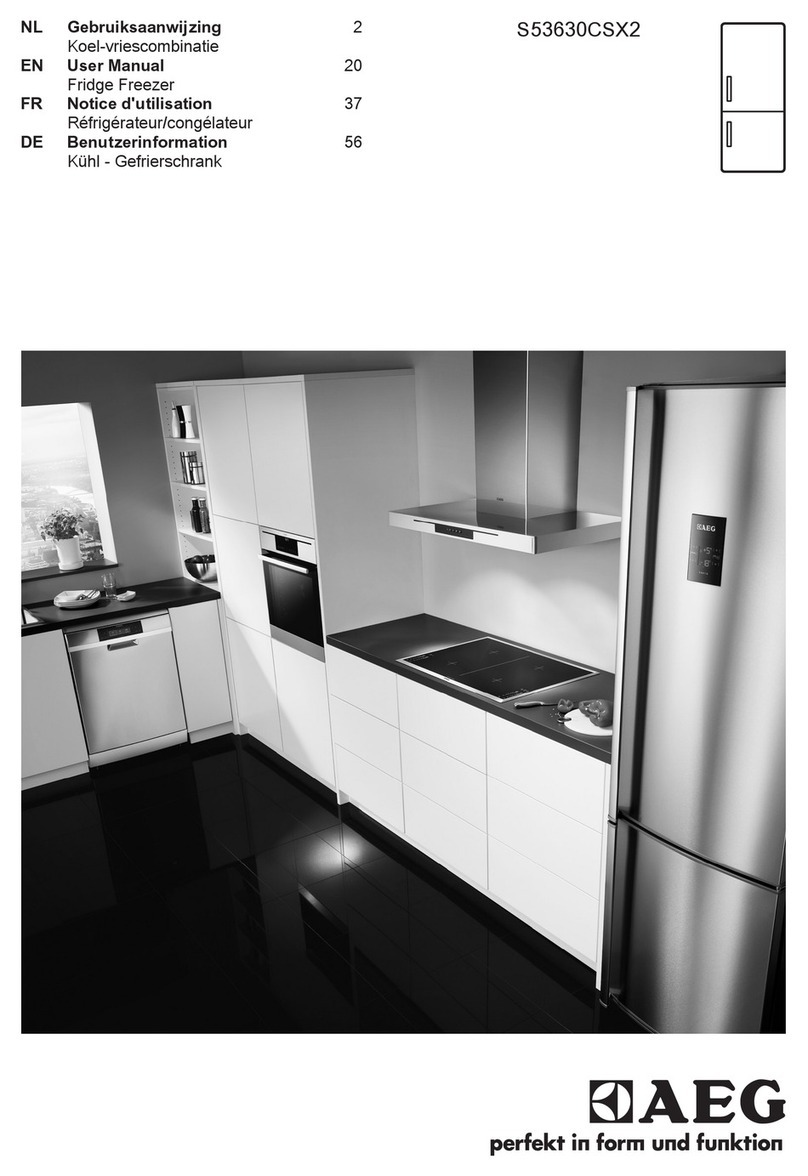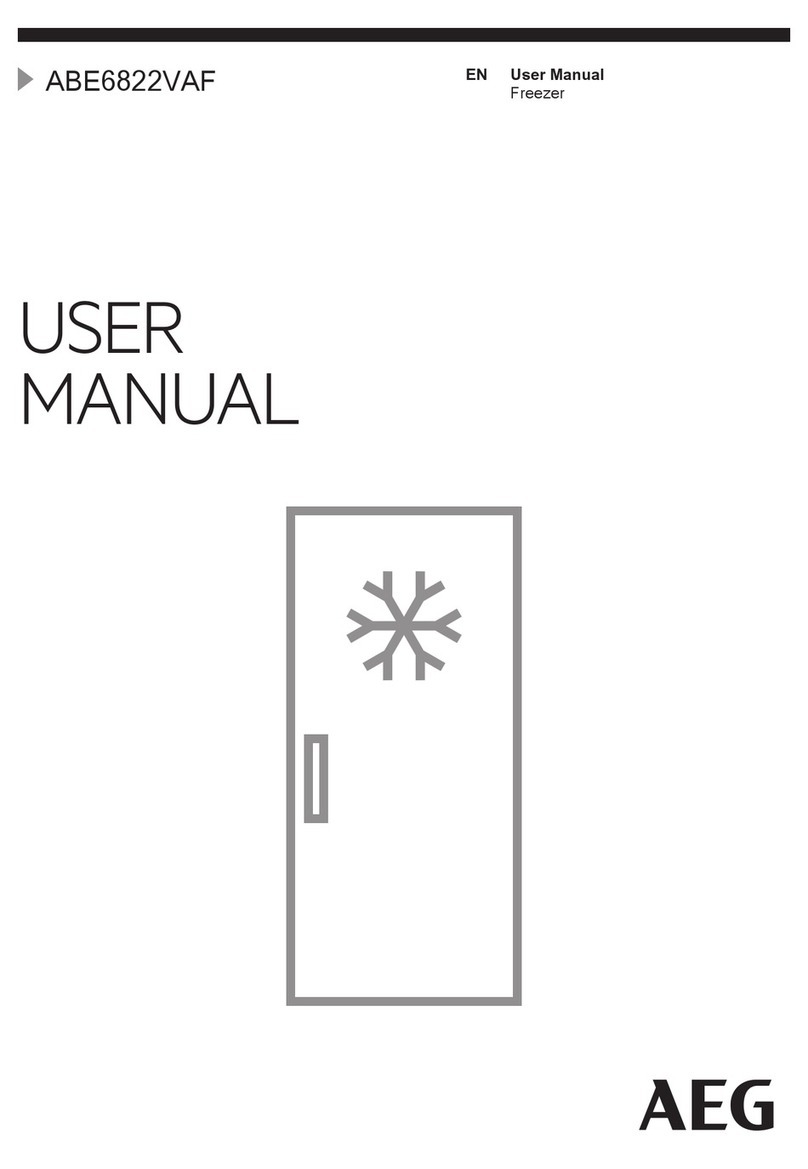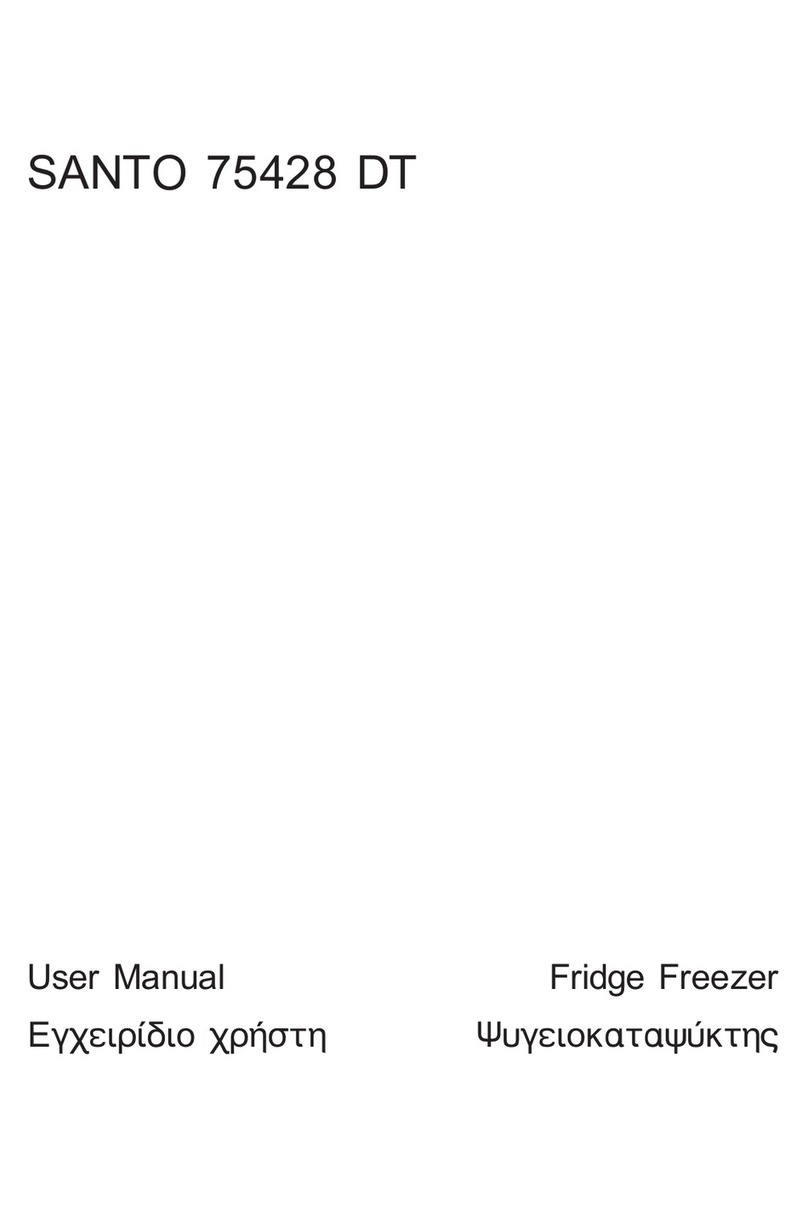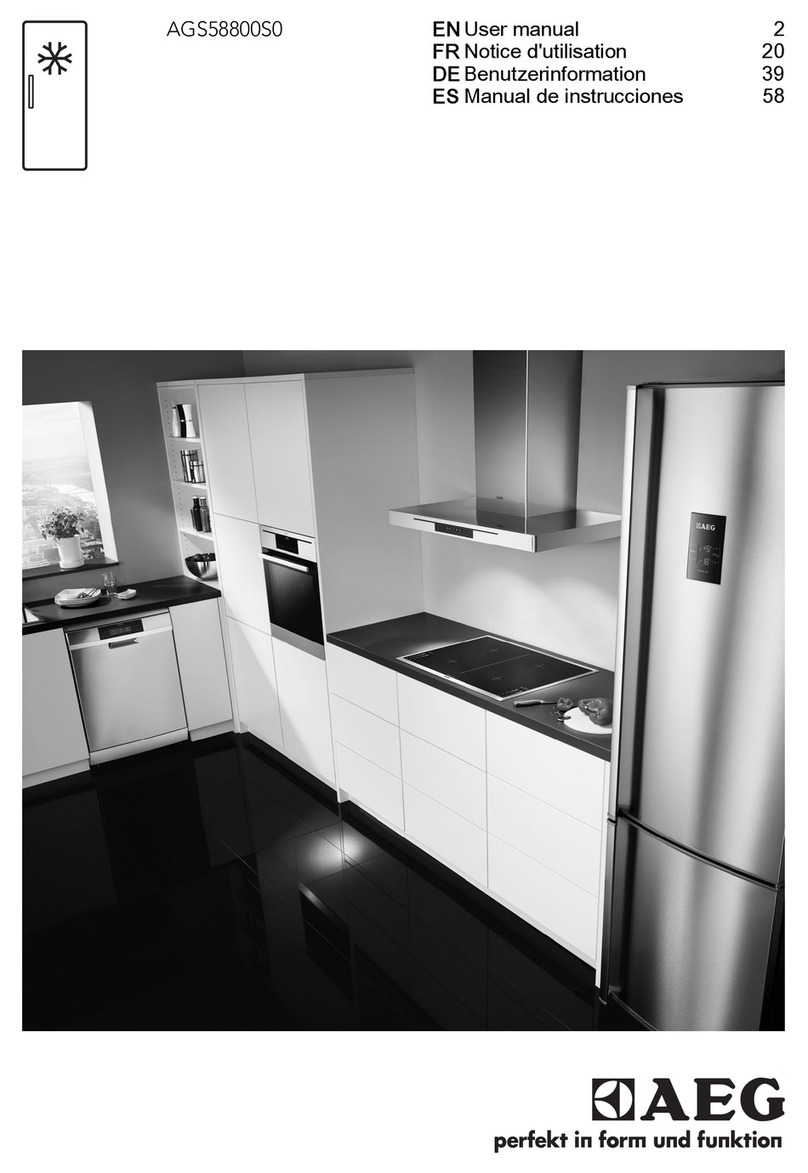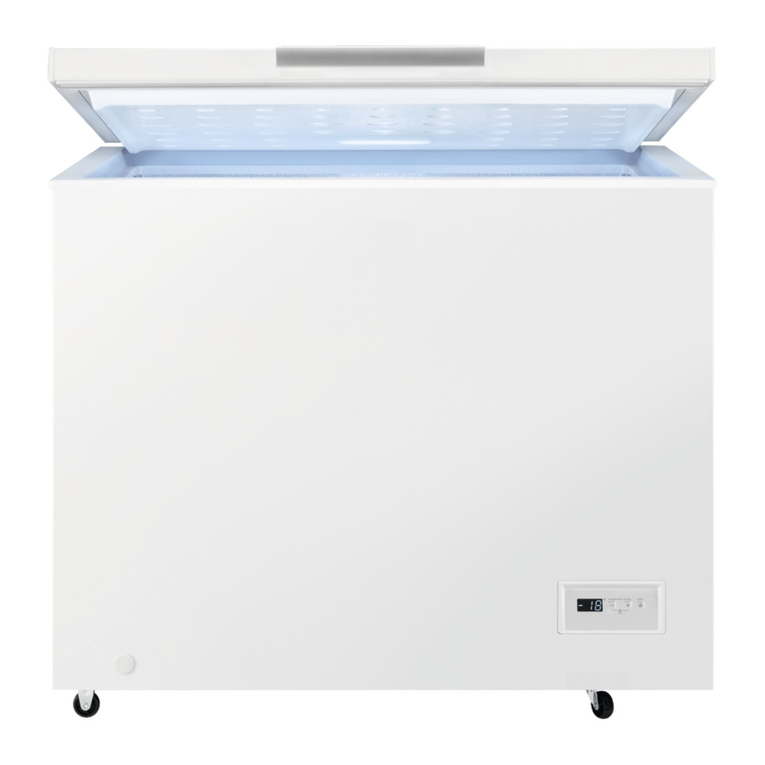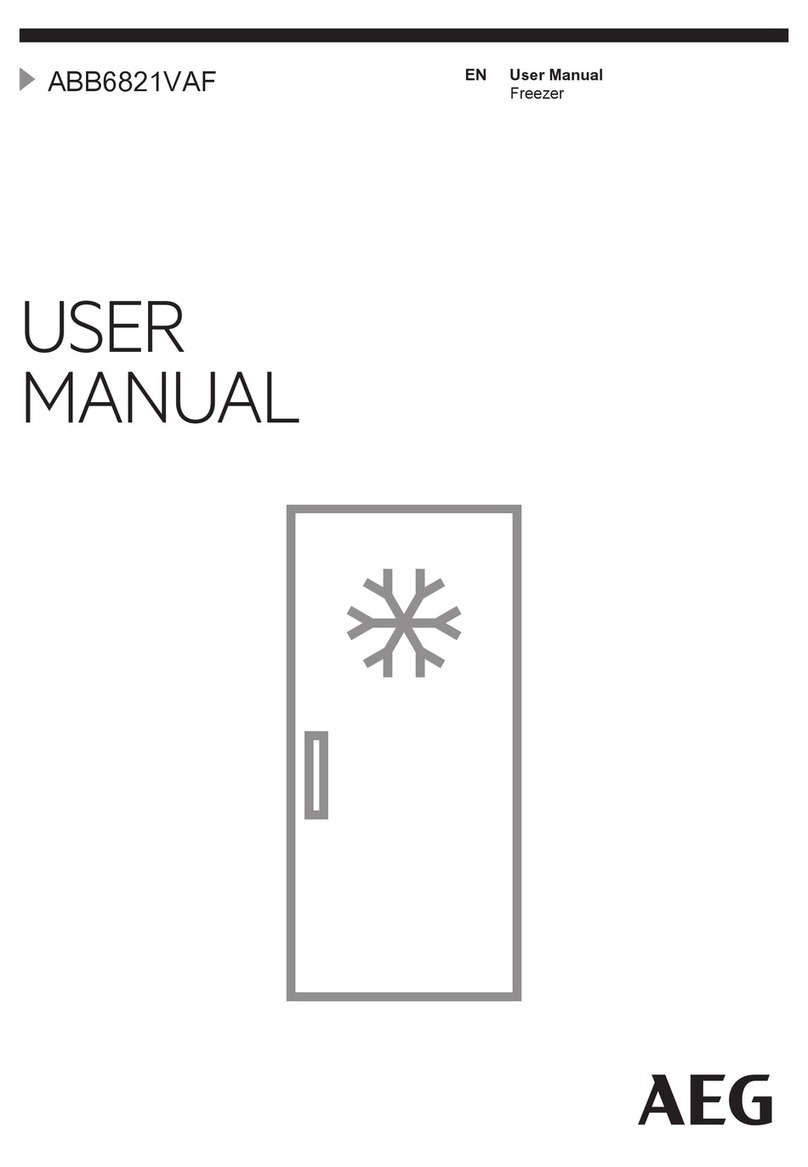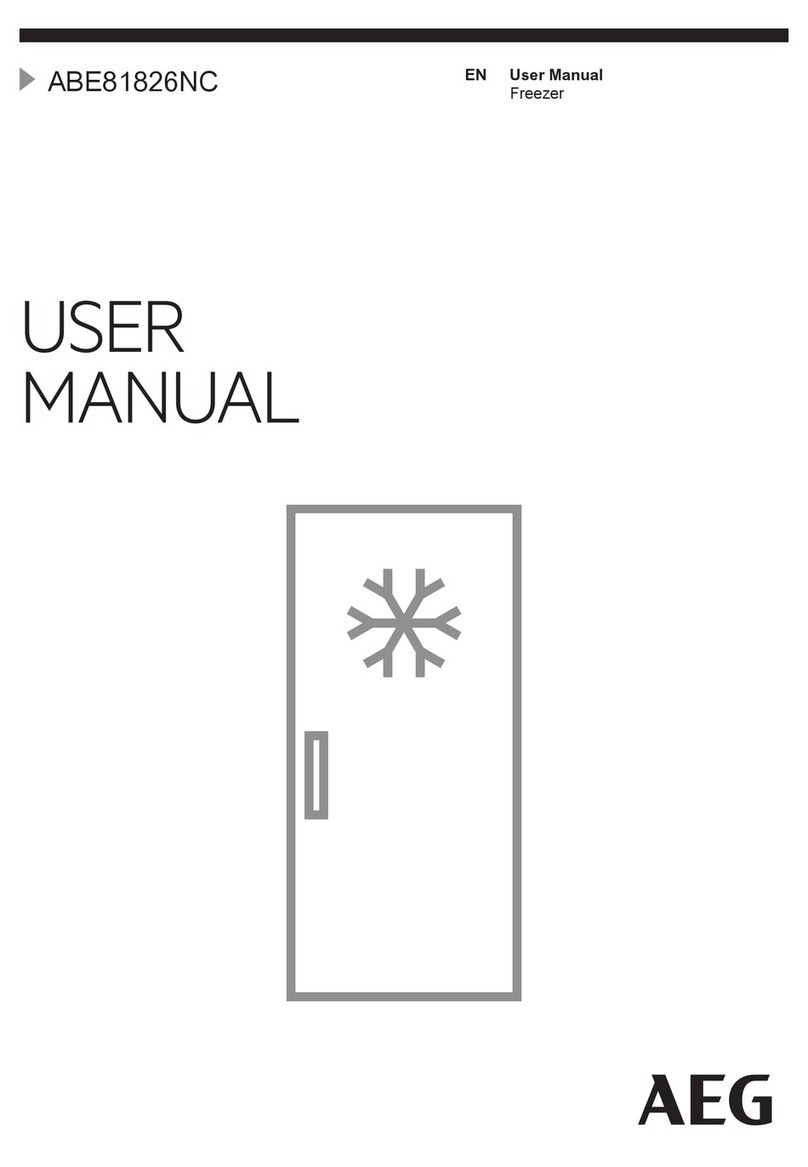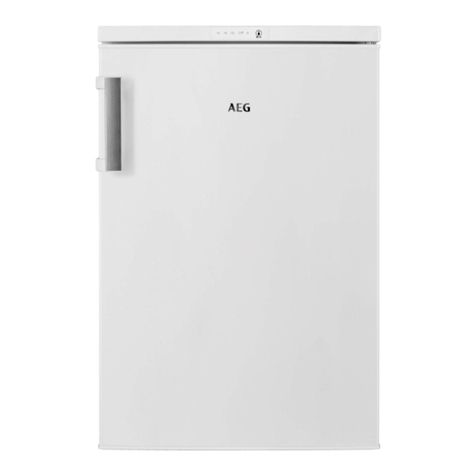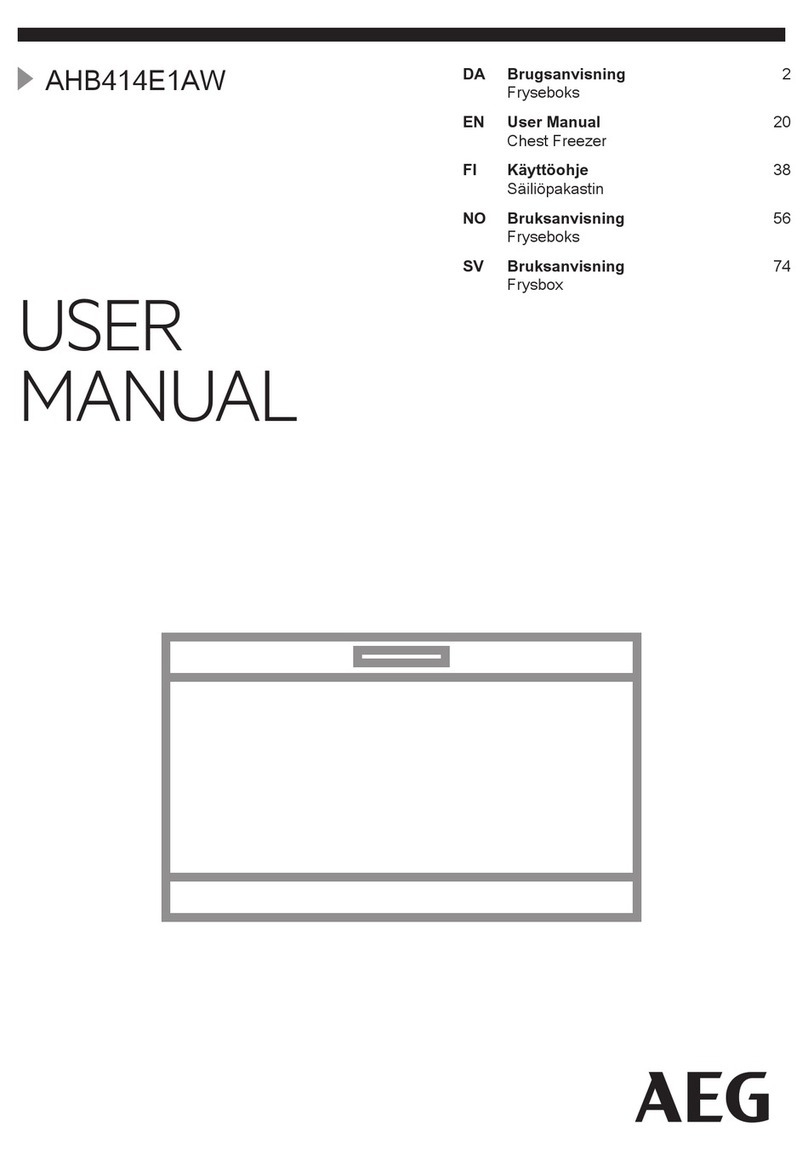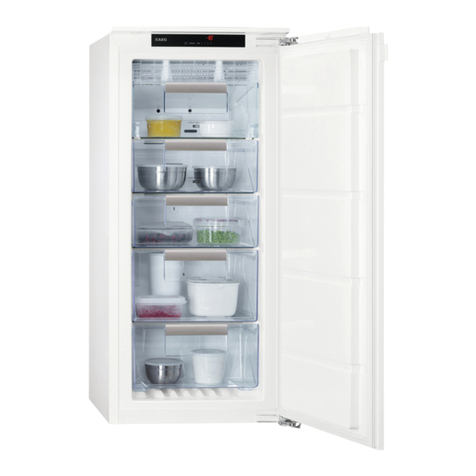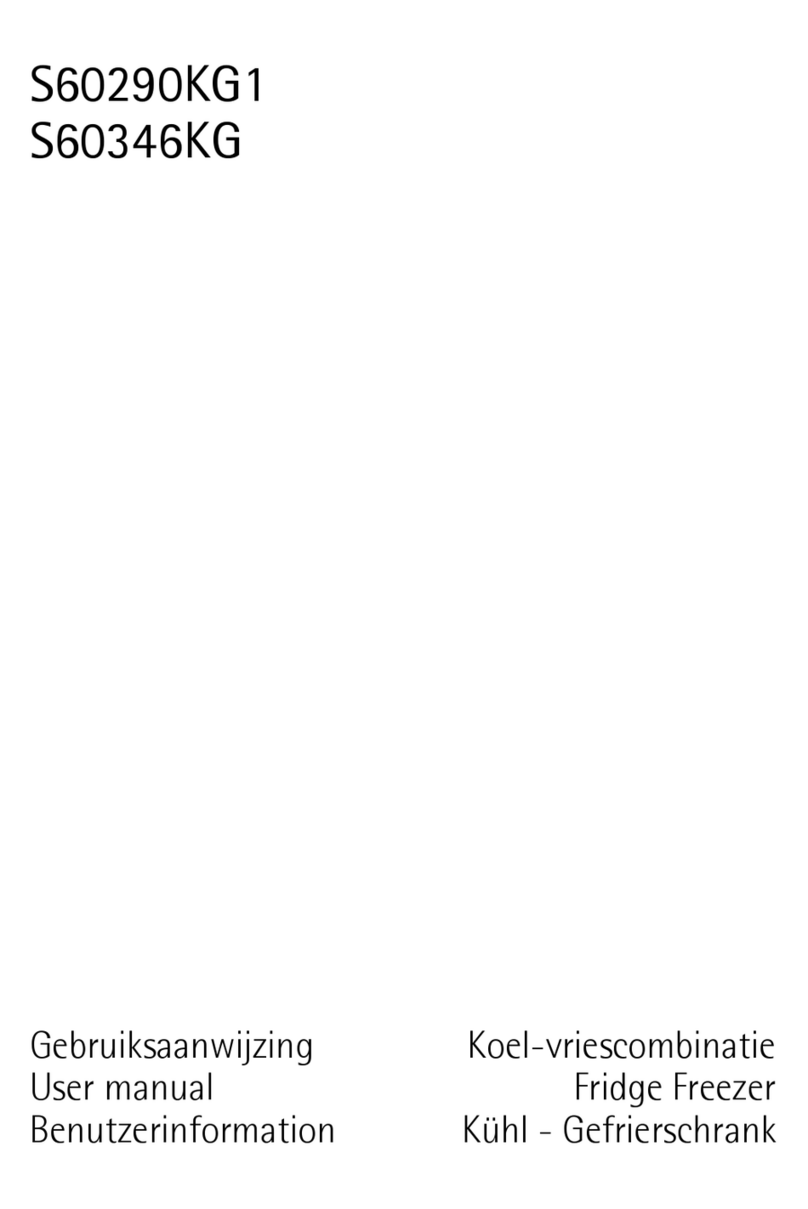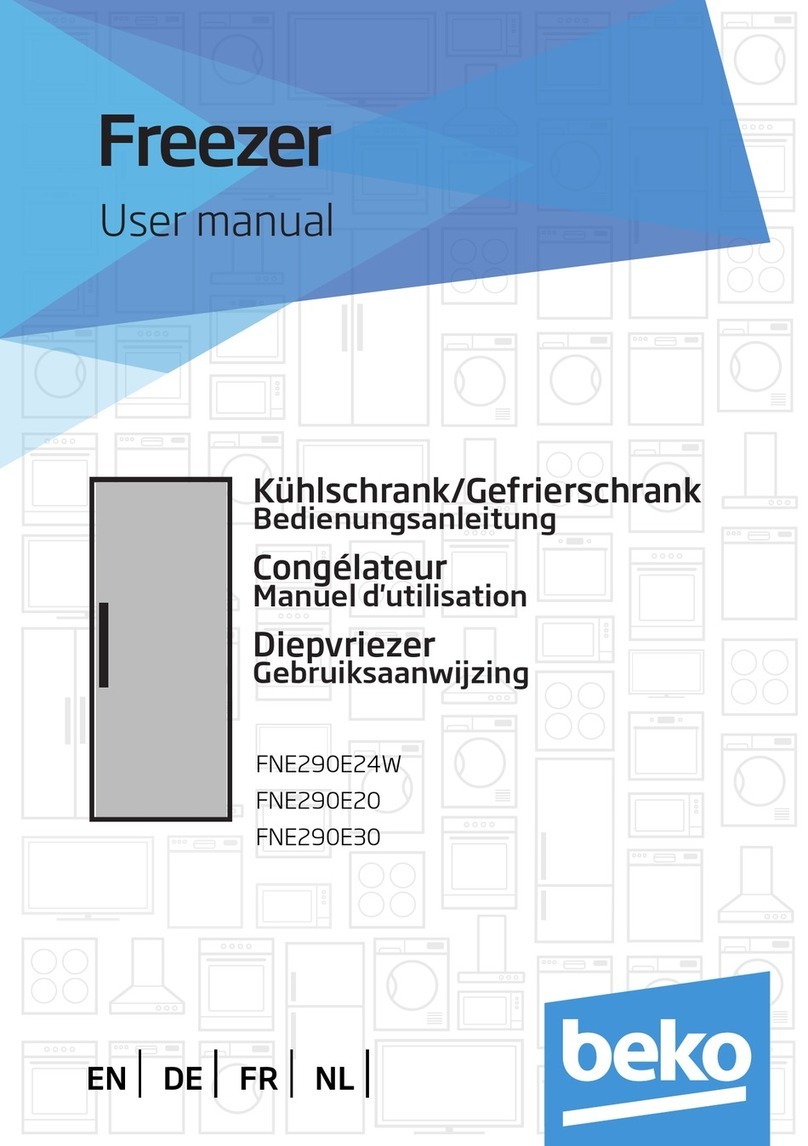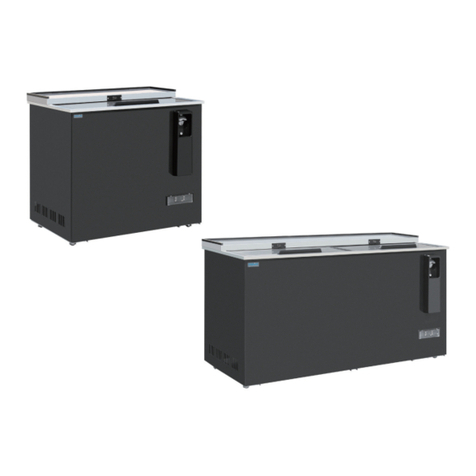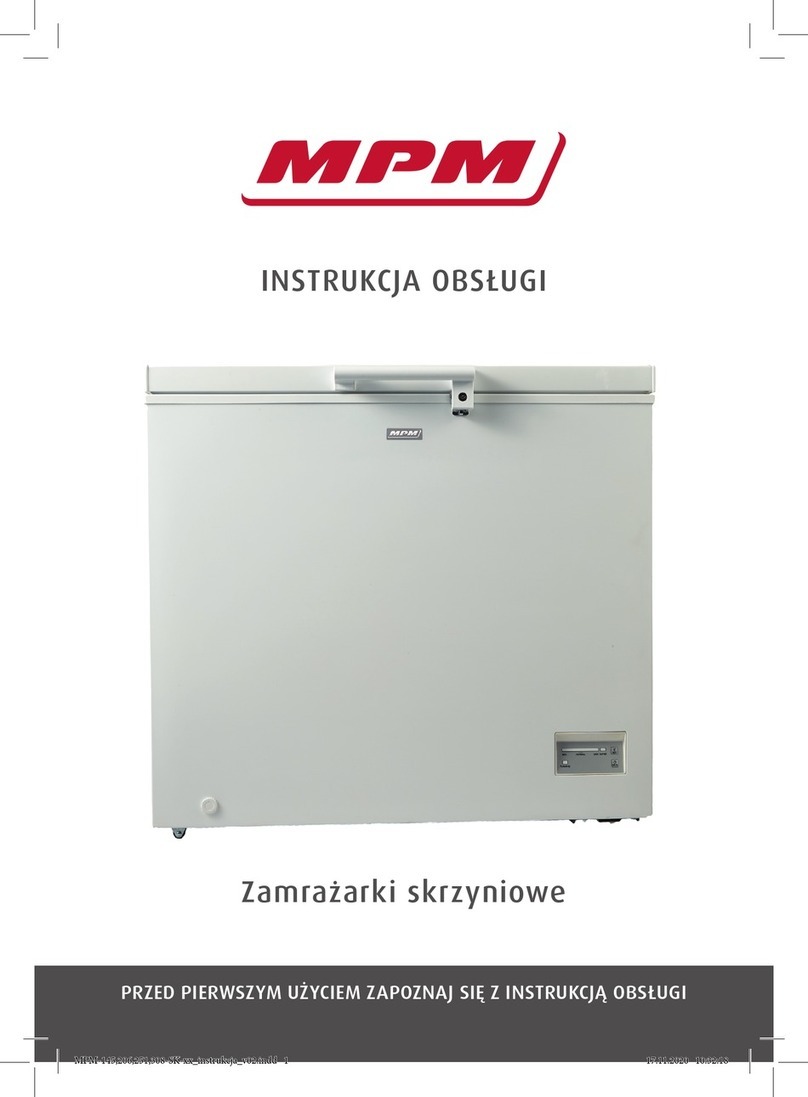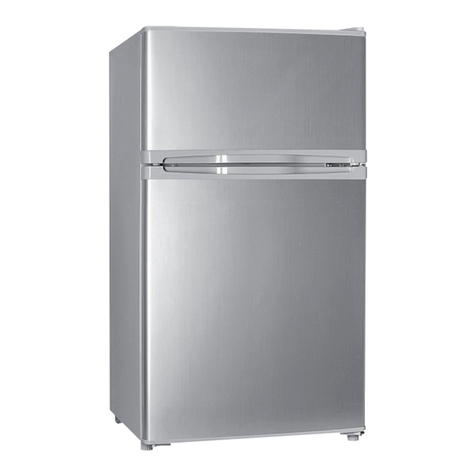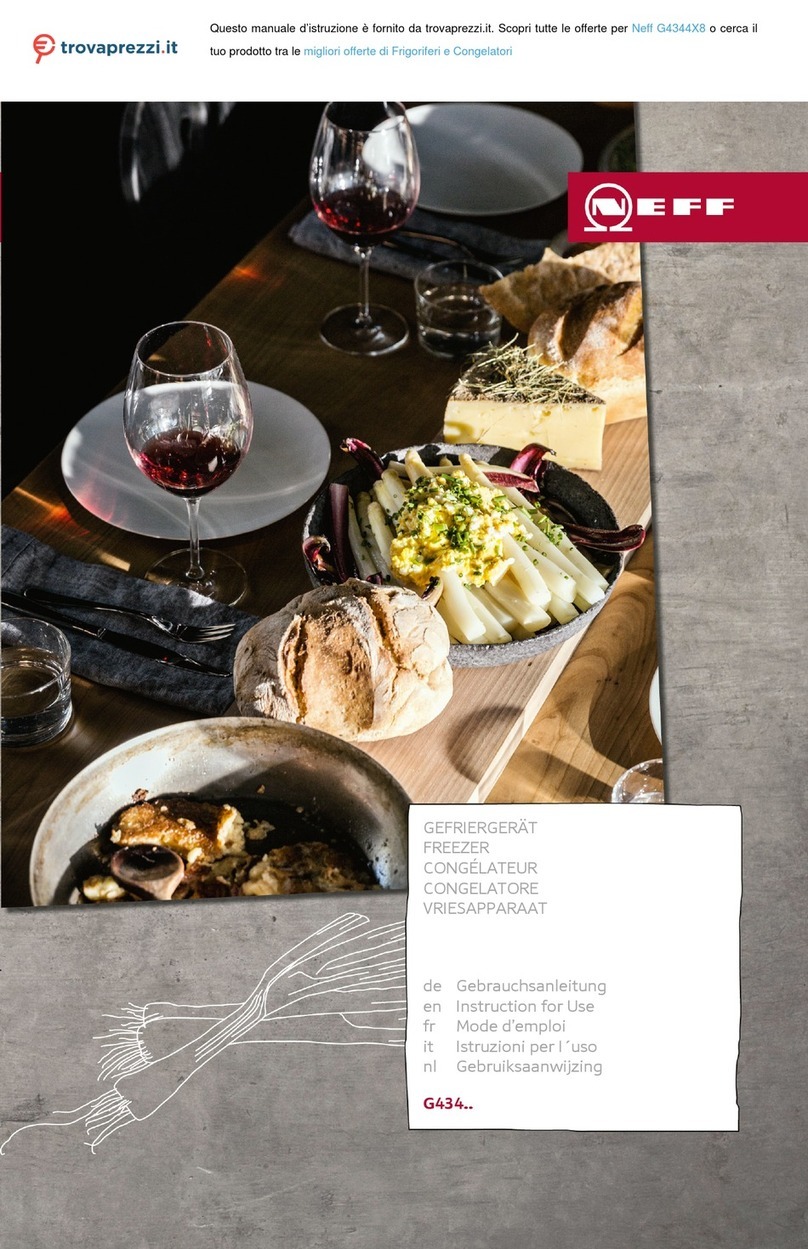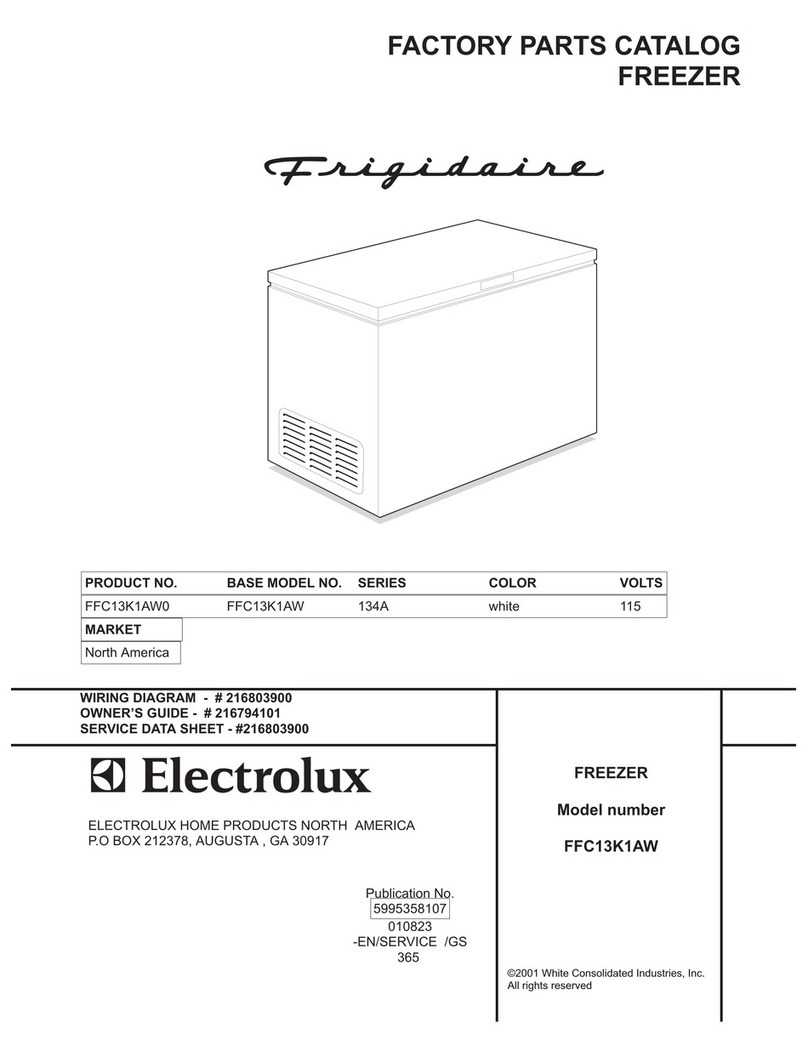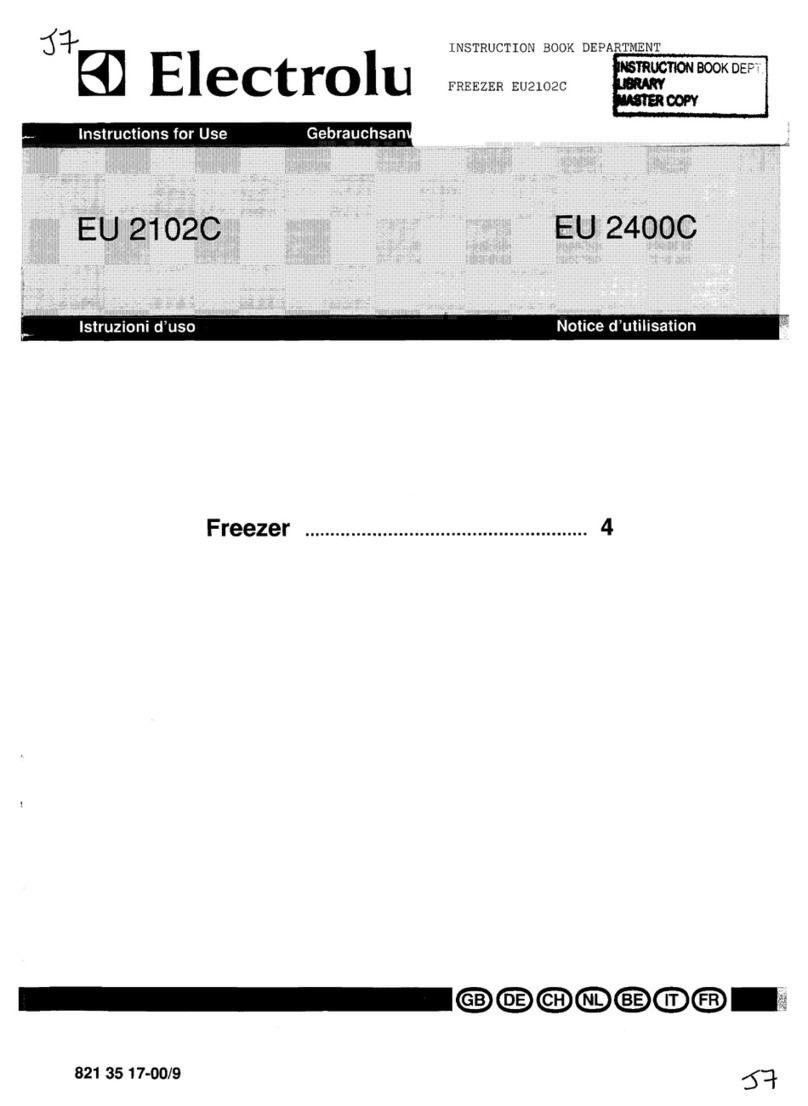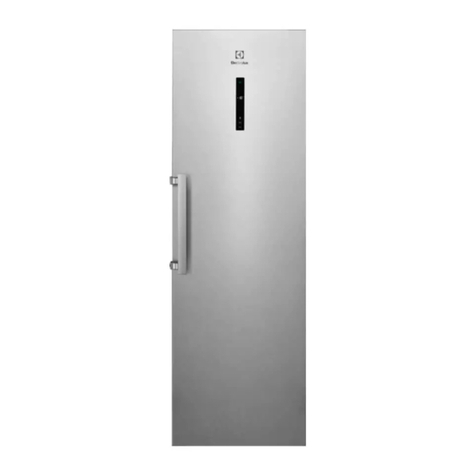
This function stops automatically after 52
hours.
You can deactivate the FROSTMATIC
function before its automatic end by
pressing the FROSTMATIC button again.
The FROSTMATIC indicator will turn off.
3.6 Door open alarm
An acoustic alarm will sound when the
door is left open for around 80 seconds.
When normal conditions are restored
(door closed), the acoustic alarm will
stop.
In any case, press the Alarm reset switch
to deactivate the acoustic alarm.
3.7 High temperature alarm
If the temperature inside the freezer has
risen to a point where the safe storage of
frozen food is no longer ensured (for
example due to an power failure), the
Alarm light will blink and an acoustic
alarm will sound.
When the freezer is first
switched on, the Alarm light
blinks until the temperature
has dropped to a safe level
for the storage of frozen
food.
1. Switch off the warning tone by
pressing the FROSTMATIC switch.
The FROSTMATIC indicator appears.
The Alarm light blinks until the required
temperature has been reached again.
2. Release theFROSTMATIC switch as
soon as the Alarm light is off.
The FROSTMATIC indicator turns off.
4. DAILY USE
WARNING!
Refer to Safety chapters.
4.1 Freezing fresh food
The freezer compartment is suitable for
freezing fresh food and storing frozen
and deep-frozen food for a long time.
To freeze fresh food activate the
FROSTMATIC function and place the
food to be frozen in the freezer
compartment.
Place the fresh food to be frozen in the
two top compartments.
The maximum amount of food that can
be frozen in 24 hours is specified on the
rating plate, a label located on the
inside of the appliance.
The freezing process lasts 24 hours:
during this period do not add other food
to be frozen.
When the freezing process is completed,
return to the required temperature (see
"FROSTMATIC Function").
4.2 Storage of frozen food
When first starting-up or after a period
out of use, before putting the products
in the compartment let the appliance run
at least 2 hours with the FROSTMATIC
function turned on.
In the event of accidental
defrosting, for example due
to a power failure, if the
power has been off for
longer that the value shown
in the technical data chart
under "Rising time", the
defrosted food must be
consumed quickly or cooked
immediately and then re-
frozen (after cooling).
4.3 Thawing
Deep-frozen or frozen food, prior to
being used, can be thawed in the
refrigerator compartment or at room
temperature, depending on the time
available for this operation.
Small pieces may even be cooked still
frozen, directly from the freezer: in this
case, cooking will take longer.
ENGLISH 7
